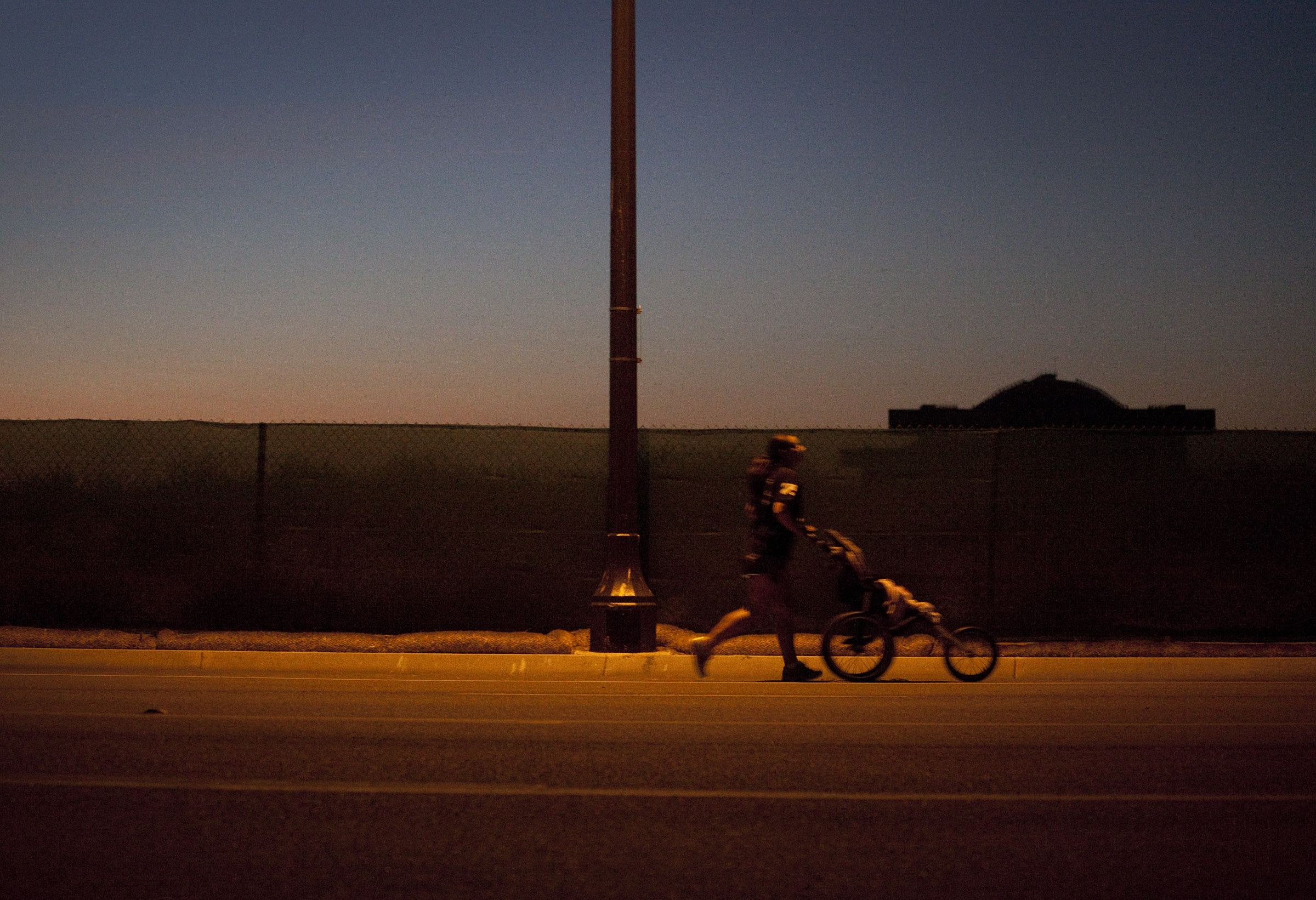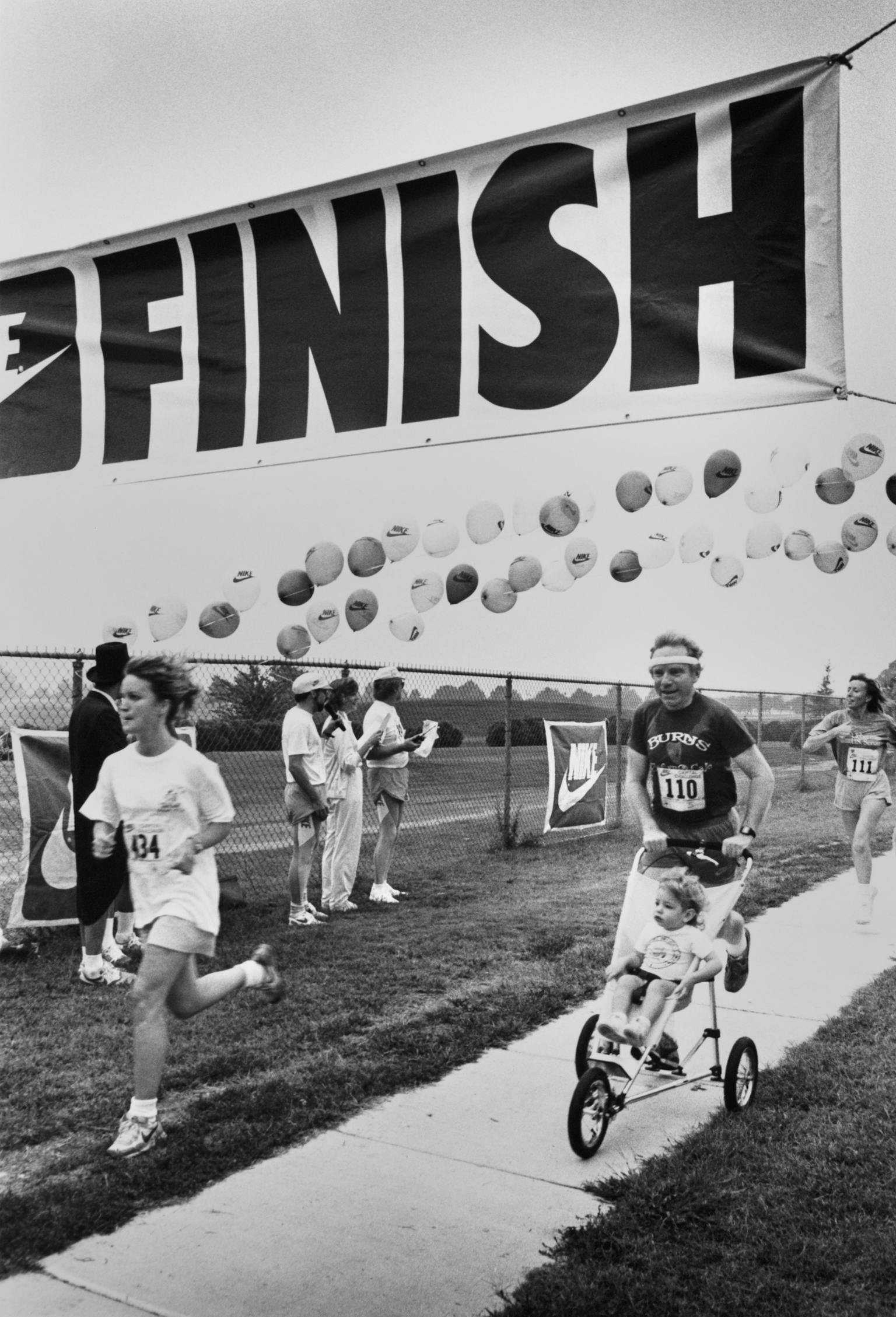
Strolling through Parenthood
The running stroller has revolutionized parents’ ability to stay fit through their kids’ early years. And the benefits go both ways.
BY AMANDA PARRISH MORGAN
PHOTOS BY GETTY
The first running stroller was produced by BabyJogger in 1984 when Phil Baechler wanted a way to make running more compatible with the early years of parenting. My mom told me that when I was a baby, just two years earlier, she’d tried only once to run with me, setting out on her usual route through our quiet neighborhood pushing an umbrella stroller, and was met with reprimands from an older woman down the block. When I was pregnant with my first baby, my parents gave me a sleek, safe, sturdy Mountain Buggy I’d chosen for the array of features – shock absorbers and reclining seat, thick tires and canopy – I imagined shepherding my future daughter through my own quiet neighborhood.
Running strollers have a reputation for languishing unused in suburban garages – the baby-gear version of the proverbial treadmill being used to hang off-season clothes. Yet, I knew from the moment I learned I was pregnant with my daughter that I wanted one. Even if I used it only occasionally, the promise it held to bring running, something long central to the way I saw myself and spent my days, into a new life as a mother felt like insurance of a broader, more significant way that raising young children did not have to be at odds with my athletic goals or identity. Yes, the stroller would slow me down and it would be cumbersome on some terrain, but it would also allow me to be more flexible – literally and figuratively – and stronger.
In the early years of motherhood, when I’d just left my job teaching high school English and coaching the cross country and track teams, I was trying to build a freelance writing career in what felt like precious, stolen snippets of time. I learned quickly that I had to save naptime and the total of four hours a week of preschool for writing. After all – I could run six miles with a stroller, but I could not write even a single coherent sentence while nursing (though I tried) or playing peek-a-boo or easing my baby into her crib. Unlike Kara Goucher, who explained to ESPN that because running is her job, she never used a running stroller, it is writing and teaching, not running that are my jobs. I don’t bring my kids to class or try to meet a deadline while playing LEGO.
Running is not my job, though it is central to who I am.
I hadn’t anticipated the ways the stroller would serve as a metaphor much more broadly relevant than in the context of running. Having the running stroller allowed me to have my children with me when I did something I loved. It let me keep them close while also pushing them out into the world ahead of me. Running with the stroller made training possible for me as a new mom, but it also made the intimate landscape of running accessible to all of us. With the running stroller, my kids and I ran through new cities and old familiar parks and at sunrise.
I ran the fastest times of my life in the years when I was training mostly with the stroller. In those hours of exploration, punctuated by winded conversation about excavators or the mailman’s new truck, I did get stronger and more flexible, and my perception of effort and focus shifted. The 18:30 it took me to run a 5k seemed shorter, somehow, than it had when I was chasing similar times as a college athlete. The ability to ignore the slow build of discomfort after several miles at half-marathon pace was not so different from the necessity of ignoring a similarly slow build of discomfort as Thea and Simon grew tired of sitting on the last stretch of a six-miler.
My kids are seven and five now, in school five days a week, and so after drop-off each morning I do my morning run and then settle in for a day of writing, grading, teaching, working in the vast stretch of hours that’s available now that they’re older. I am not as fast as I was in those early years – I’m not sure if it’s just the inevitable result of aging, or because I’m focused more on the demands of work and the more complex needs of older children, or if it’s because there really was something physiologically beneficial in those stroller runs.
The playground has been upgraded to the typical green-and-yellow plastic, woodchip-cushioned, safer style of all the others in town and anyway, I’ve given away first the double running stroller, and later, the single one. The last time I led my daughter through the easement, we were on bikes, riding to her best friend’s house, but it still has some of that overgrown, secret magic. Now that my children are too long-limbed and independent for a stroller, I miss that magical world, and the many ways in which keeping my children safe felt so much more straightforward and literal then, when they could ride strapped in and facing out into the world as I pushed them for miles.

Amanda Parrish Morgan is the author of Stroller, published by Bloomsbury, 2022.
